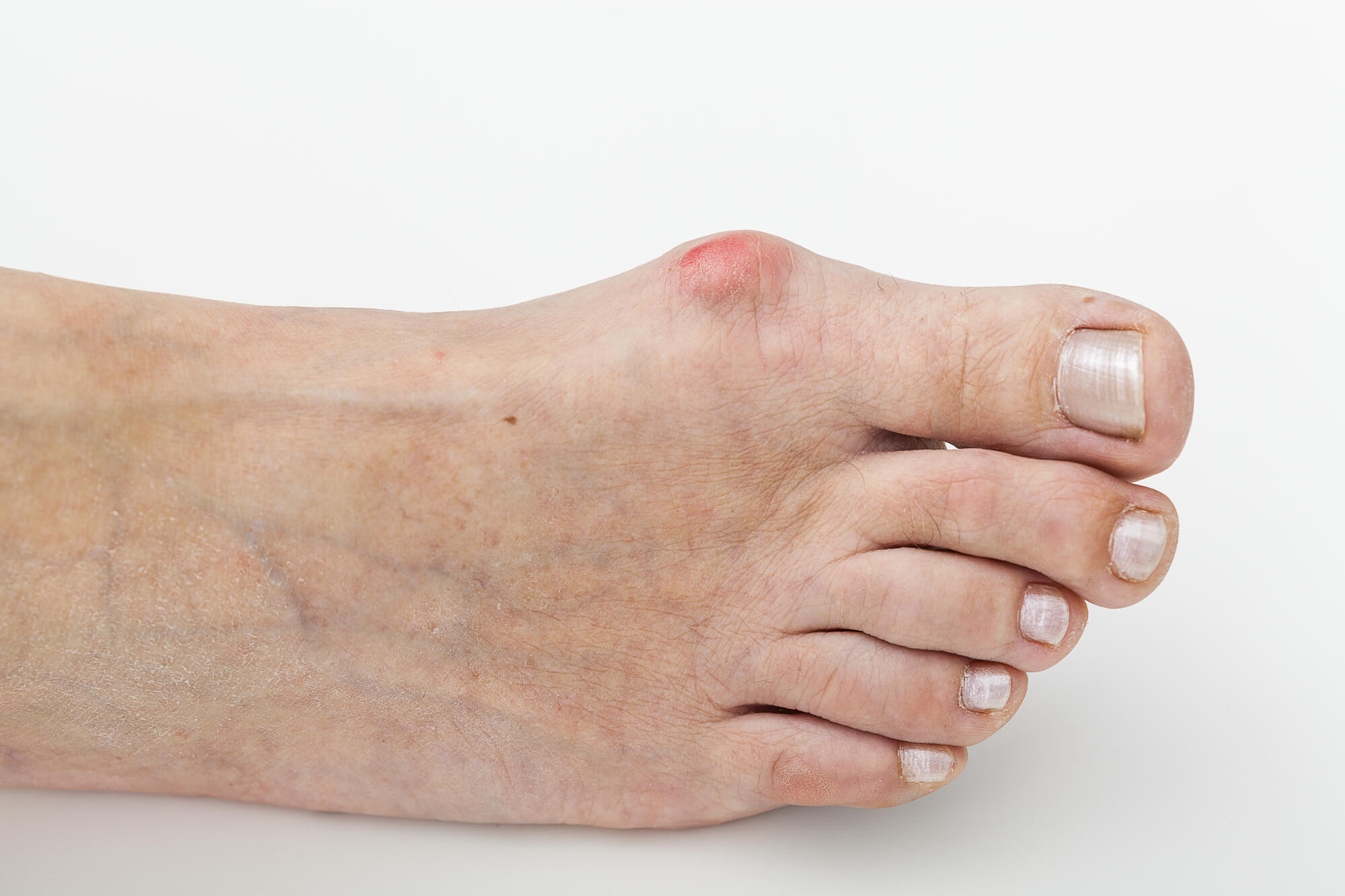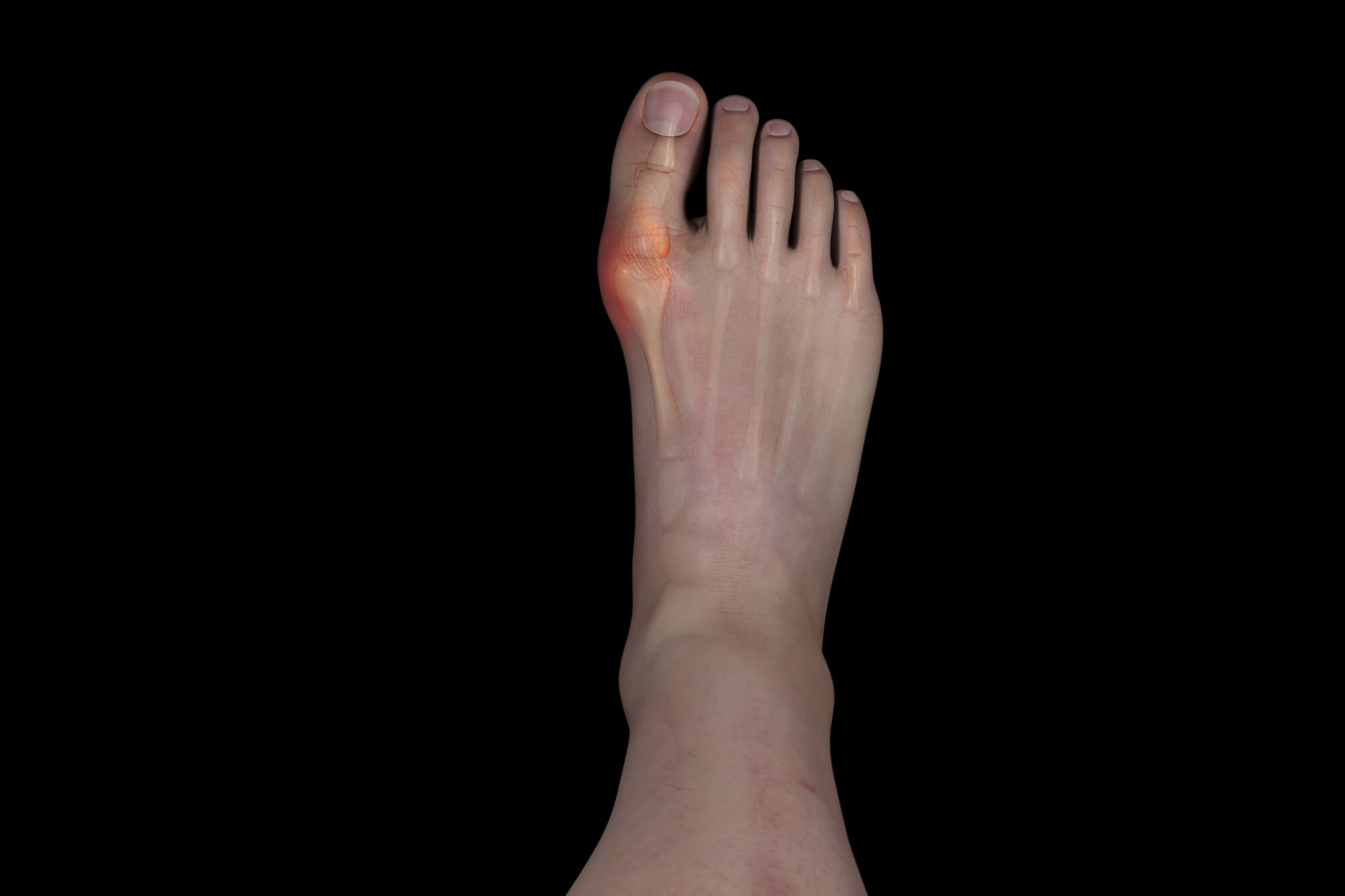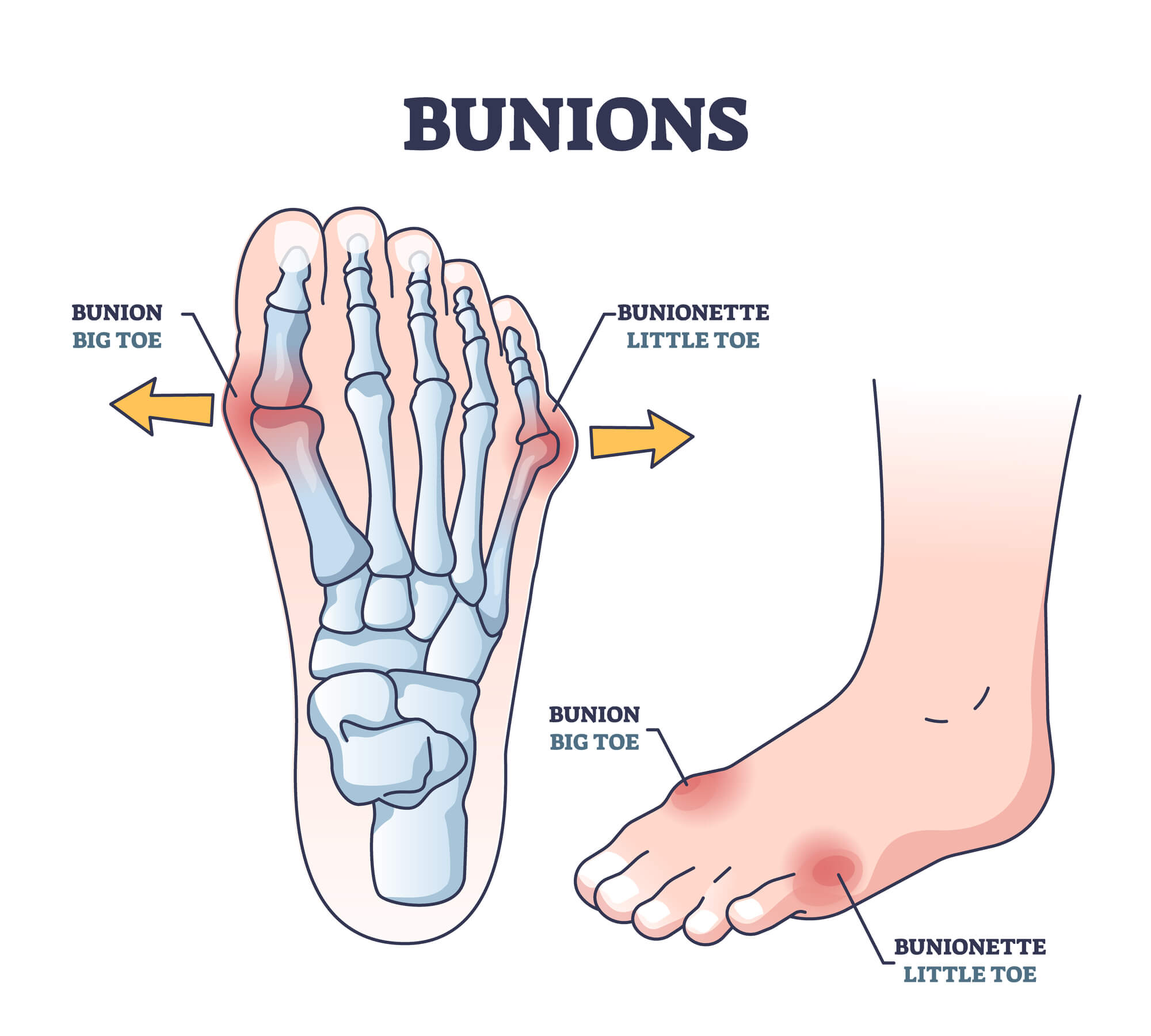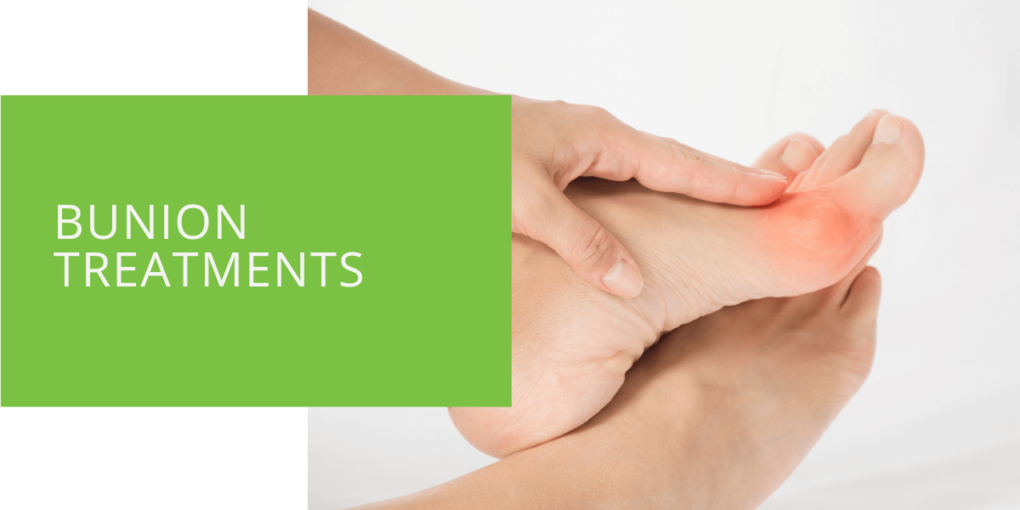Bunion Treatments: Options and Considerations
Bunions can be a painful and frustrating foot problem, causing discomfort and deformity in the big toe joint. A bunion is a bony bump that forms on the joint at the base of the big toe, often caused by genetics or wearing narrow, ill-fitting footwear. If you're experiencing bunion pain, it's important to consider your treatment options and consult with a podiatrist. This article will explore the various bunion treatment options available and help you decide which one is right for you.
What is a Bunion?
Definition
A bunion, also known as hallux valgus, is a deformity that occurs when the big toe starts to lean towards the second toe. This causes the joint at the base of the big toe to stick out, forming a bony bump on the side of the foot. Bunions can be caused by genetics, but they are often the result of wearing poorly fitting footwear, such as high heels or shoes with a narrow toe box.

Cause
Bunions are often hereditary, but they can also be caused by wearing footwear that doesn't fit properly. High heels, for example, can put extra pressure on the toes and cause the big toe to lean inwards. Wearing shoes with a narrow toe box can also contribute to the development of bunions, as it forces the toes into a cramped space and can cause the big toe joint to become misaligned.
Symptoms
The most common symptom of a bunion is a painful bony bump on the side of the foot, near the base of the big toe. Bunions can also cause the big toe to lean in towards the second toe, leading to further discomfort and deformity. Other symptoms may include redness, swelling, and difficulty finding footwear that fits properly.
Non-Surgical Treatment Options
Shoe Inserts
One non-surgical treatment option for bunions is shoe inserts, also known as orthotics. These inserts can help cushion the bunion and redistribute weight off the joint. They may also help to realign the toes and reduce pain. Shoe inserts can be purchased over the counter or prescribed by a podiatrist.
Pain medication
Pain medication, such as nonsteroidal anti-inflammatory drugs (NSAIDs), can reduce the pain and swelling associated with bunions. These medications can be purchased over the counter or prescribed by a doctor.
Physical therapy
Physical therapy may also be recommended for the treatment of bunions. Exercises and stretches can help to improve flexibility and strengthen the muscles in the foot. These techniques may help to reduce pain and improve overall foot function.

Surgical Treatment Options
Bunionectomy
Bunionectomy is a surgical procedure that involves removing the bony bump and realigning the big toe joint. This procedure may be recommended for severe bunions that cause significant pain and difficulty finding comfortable footwear. There are several different types of bunionectomy, including a traditional bunionectomy and a minimally invasive bunionectomy. The type of procedure used will depend on the severity of the bunion and the individual patient's needs.
Osteotomy
An osteotomy is a surgical procedure that involves cutting and realigning the bone in the big toe joint. This can help to correct the deformity and reduce pain. There are several different types of osteotomy, including a scarf osteotomy and a lapidus osteotomy. The type of procedure used will depend on the severity of the bunion and the individual patient's needs.
Arthrodesis
Arthrodesis is a surgical procedure that involves fusing the big toe joint to reduce pain and improve stability. This procedure may be recommended for severe bunions that have not responded to other treatment methods. It is generally considered a last resort due to the permanent nature of the joint fusion.

Which Treatment is Right for Me?
Factors to Consider
There are several factors to consider when deciding on the best bunion treatment option. The severity of the bunion is an important factor, as is the presence of other foot problems, such as arthritis. Your age and overall health will also be taken into account. Your lifestyle and daily activities should also be considered, as some treatment options may require a period of immobilization or reduced activity.
Consulting with A Doctor
It's important to consult with a podiatrist or foot specialist when considering bunion treatment options. A podiatrist can assess the severity of your bunion and recommend the most appropriate treatment. They can also help you understand each treatment option's pros and cons and assist you in making an informed decision.
Pros and Cons of Different Treatment Options
When deciding on the best bunion treatment option, it's important to consider the pros and cons of each option.
Non-surgical treatment options, such as shoe inserts and pain medication, have the following pros and cons:
Pros
Cons
Surgical treatment options, such as bunionectomy and osteotomy, have the following pros and cons:
Pros
Cons
It's important to weigh the pros and cons of each treatment option and discuss them with a doctor before making a decision.
Conclusion
Bunions can be a painful and frustrating foot problem, but there are several treatment options available to help reduce pain and improve function. Non-surgical treatments, such as shoe inserts and physical therapy, can be effective in mild to moderate cases. Surgical treatments, like bunionectomy and osteotomy, may be necessary for more severe cases. It's important to consult with a podiatrist or foot specialist to determine the best treatment option for you and your individual needs.

FAQ
Can a bunion be corrected without surgery?
Yes, a bunion can be corrected without surgery in some cases. Non-surgical treatment options, such as shoe inserts and physical therapy, can effectively reduce pain and improve function in mild to moderate cases of bunions. However, surgical treatment may be necessary for more severe cases. It's important to consult with a podiatrist or foot specialist to determine the best treatment option for you.
What is the fastest way to get rid of a bunion?
The fastest way to get rid of a bunion will depend on the severity of the bunion and the individual patient. In some cases, non-surgical treatment options, such as shoe inserts and pain medication, may provide fast relief. However, surgical treatment may be necessary for more severe cases and may involve a longer recovery time. It's important to discuss treatment options with a doctor to determine the best course of action.
What is the main cause of bunions?
The main cause of bunions is often genetics, but they can also be caused by wearing poorly fitting footwear. High heels and shoes with a narrow toe box can put extra pressure on the toes and cause the big toe joint to become misaligned, leading to the development of a bunion.
Can a bunion go away?
In some cases, a bunion may improve on its own with non-surgical treatment options, such as shoe inserts and physical therapy. However, in most cases, bunions do not go away without treatment. If left untreated, bunions can become more severe and cause greater discomfort. It's important to seek treatment to reduce pain and improve function.

